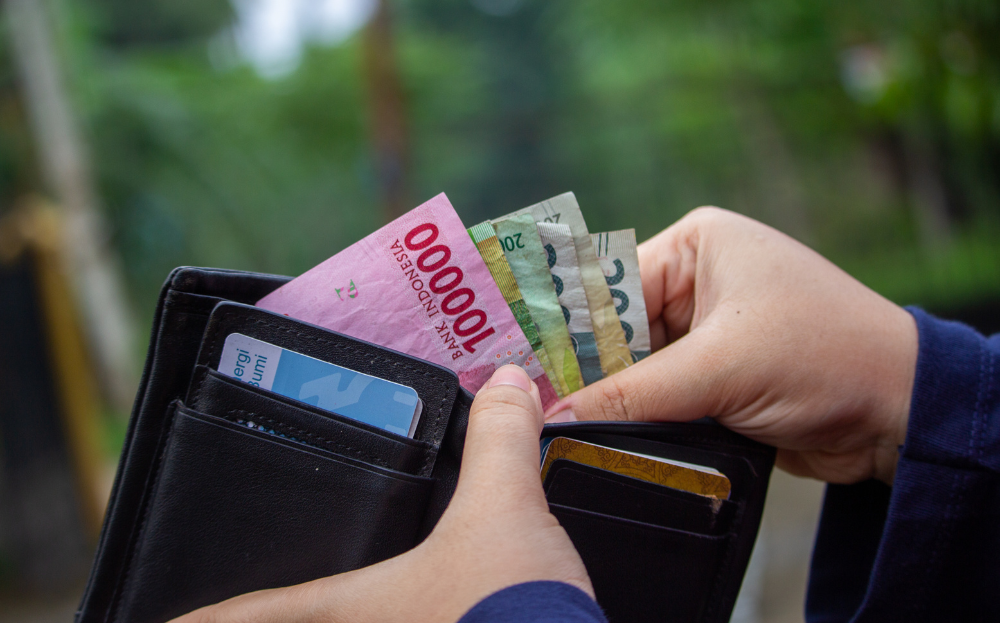Have you ever suddenly bought something just because you were feeling stressed, angry, or sad? Or feel happy after checking out items that you don’t actually need? If so, you might be experiencing emotional spending. This habit is often unconscious, but it can have a big impact on your financial condition in the long run.
This article will discuss in-depth about emotional spending and how to prevent it. By recognizing triggers and learning to manage your emotions, you can take control of your financial decisions and prevent unnecessary spending.
What is Emotional Spending?
Emotional spending is a spending habit that is triggered by emotions, not real needs. When feeling sad, lonely, angry, bored, or even too happy, some people try to find an escape by shopping. This activity provides a momentary sensation of relief or happiness, but is often followed by regret and financial stress.
The problem is, emotional spending doesn’t just happen once or twice. If not controlled, this habit can become a recurring pattern and slowly drain your wallet. Therefore, it is important to recognize the signs early on so that you can manage it wisely.
1. Recognize Triggering Emotions
The first step to avoid emotional spending is to recognize what emotions usually trigger the urge to shop. Maybe you often shop online after a fight with your partner, or buy expensive food when you feel bored with your work routine.
By recognizing your emotional patterns, you will be more aware of spending habits that are not based on need. Try to record your mood every time you want to make an impulse purchase. From there, you can start identifying the root of the problem and find ways to overcome it without having to rely on shopping as a solution.
Recognizing your emotions doesn’t mean restraining yourself completely, but rather understanding that there are other ways to manage your feelings without draining your wallet.
2. Create a Budget for Emotional Needs
It is okay to shop as a form of self-reward or entertainment, as long as it is done in a planned manner. You can make a special budget for “emotional shopping” within reasonable limits. For example, allocate 5-10% of your income to buy items that are fun but not essential.
This way, you can still enjoy the pleasure of shopping without feeling guilty or financially disturbed. This is a healthier and more responsible form of emotional spending management.
It is important to note that limiting does not mean restricting. Instead, by providing a special space, you can be more controlled and avoid impulse shopping that suddenly appears when emotions are unstable.
3. Postpone Purchases and Give Time to Think
When there is a strong urge to shop because of emotions, give yourself time to think. Apply the “wait 24 hours” principle or wait at least one day before deciding to buy something unplanned.
Most of the time, emotional spending urges will subside after the negative emotions have passed. If after 24 hours you still feel the need for the item, then reconsider based on logic and actual needs.
Postponing purchases is a simple but effective way to give your brain space to think more clearly. That way, you can avoid decisions that are based on momentary feelings.
4. Find Alternative Activities to Distract Your Emotions
Shopping is not the only way to treat stress or sadness. Instead of e-commerce, try distracting yourself with other enjoyable activities, such as going for a walk, watching a movie, light exercise, or chatting with friends.
Replacing emotional spending habits with more positive activities can help you feel better emotionally without having to spend money. This is an effective form of self-management so that your emotions don’t dictate your financial decisions.
The more alternatives you find, the easier it is to shift your focus away from unnecessary spending.
5. Use an App or Expense Log
Record all your expenses, including those that arise due to emotional impulses. That way, you can evaluate whether most of your money is spent on needs, wants, or emotions.
Many financial applications now provide features to categorize types of expenses. This can help you identify emotional spending patterns that you may not have realized before.
With regular record keeping, you can create a better financial strategy and start improving bad habits over time.
Manage Emotional Spending with Treasury
Managing emotional spending isn’t just about restraint, it’s also about redirecting your money to more useful purposes. One of the smartest ways to change your impulsive spending habits is to start investing, and digital gold can be the right choice that is safe, easy, and can be started with a small amount.
With Treasury, you can start investing in digital gold anytime and anywhere through the app. Instead of spending your money on fleeting purchases, investing in gold gives you the opportunity to build a more stable financial future.
Instead of constantly spending money on unnecessary purchases due to emotional impulses, it is better to divert the funds to digital gold investment at Treasury. Let’s take control of your finances from now on and make every dollar count!











